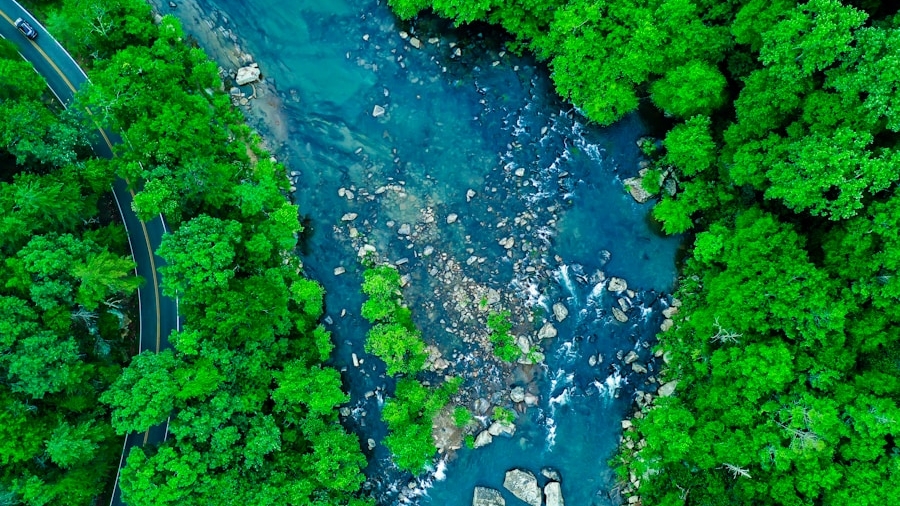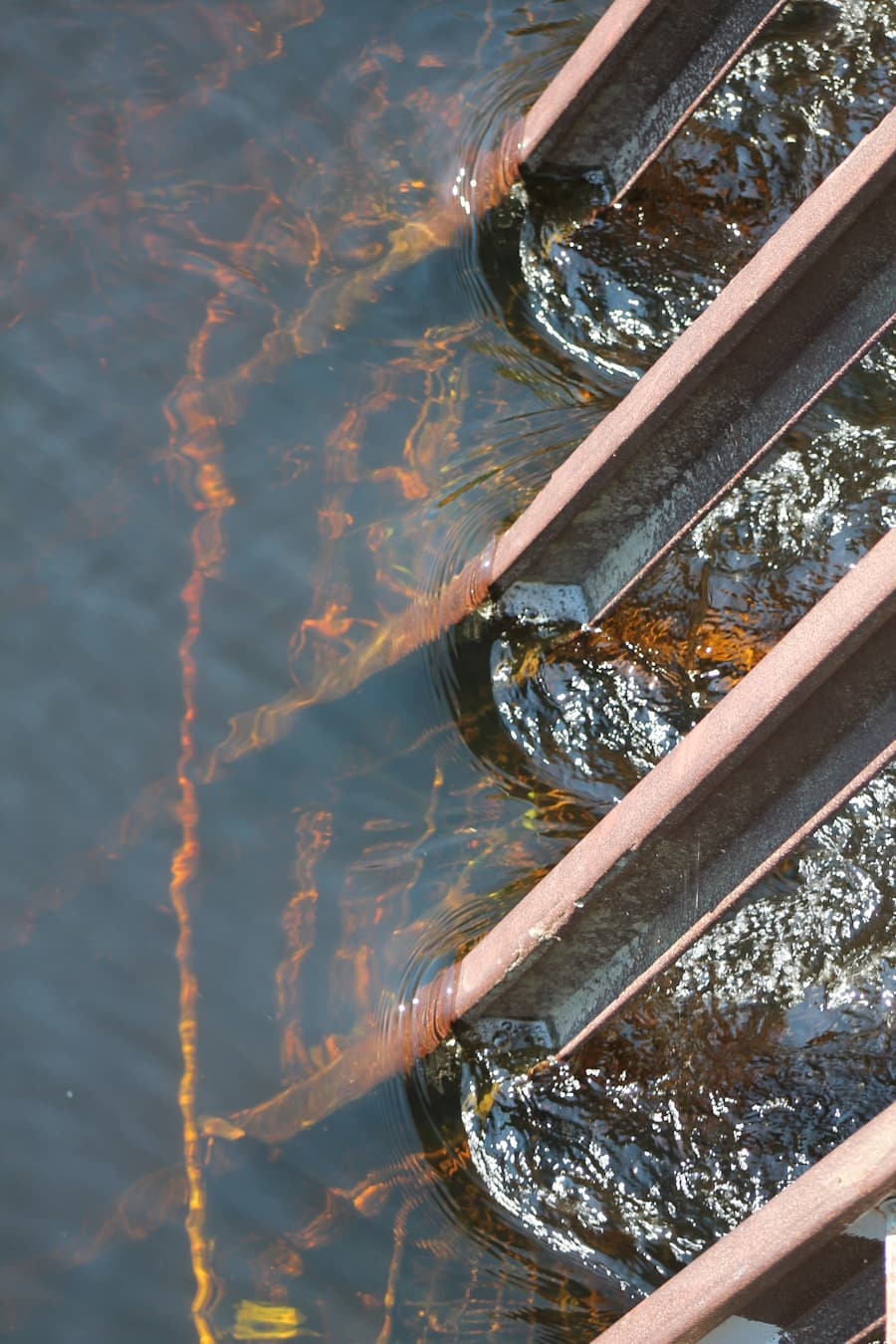Industrial water pollution is a pressing global issue that arises from the discharge of harmful substances into water bodies as a result of industrial activities. This form of pollution is characterized by the introduction of toxic chemicals, heavy metals, and other hazardous materials into rivers, lakes, and oceans, often leading to severe ecological and health consequences. Industries such as manufacturing, mining, and agriculture are significant contributors to this problem, as they frequently release untreated or inadequately treated wastewater into the environment.
The consequences of industrial water pollution extend beyond the immediate vicinity of industrial sites, affecting entire ecosystems and communities that rely on these water sources for drinking, recreation, and agriculture. The complexity of industrial water pollution is compounded by the diverse range of pollutants involved. These can include organic compounds like solvents and pesticides, inorganic substances such as heavy metals (lead, mercury, cadmium), and biological contaminants like pathogens.
The interaction of these pollutants with natural water systems can lead to bioaccumulation in aquatic organisms, disrupting food chains and posing risks to human health through contaminated seafood or drinking water. As industries continue to expand and evolve, the challenge of managing and mitigating industrial water pollution becomes increasingly critical, necessitating innovative solutions and proactive measures.
Key Takeaways
- Industrial water pollution has significant impacts on the environment and human health, making it a critical issue to address.
- AI has the potential to revolutionize the monitoring and detection of water pollution, providing real-time data and insights.
- AI can play a crucial role in predicting and preventing industrial water pollution through advanced analytics and predictive modeling.
- AI-driven solutions offer innovative approaches to treating and managing industrial water pollution, improving efficiency and effectiveness.
- Case studies demonstrate the successful implementation of AI in reducing industrial water pollution, showcasing its potential for widespread adoption and impact.
The Impact of Industrial Water Pollution on the Environment and Human Health
The environmental impact of industrial water pollution is profound and multifaceted. Aquatic ecosystems suffer from reduced biodiversity as sensitive species are unable to survive in polluted waters. For instance, high levels of heavy metals can lead to the decline of fish populations, which are vital for maintaining ecological balance.
Additionally, the introduction of nutrients from agricultural runoff can cause eutrophication, leading to algal blooms that deplete oxygen levels in water bodies and create dead zones where aquatic life cannot thrive. These ecological disruptions can have cascading effects on terrestrial ecosystems as well, as animals that depend on healthy aquatic environments for food and habitat are also affected. Human health is equally at risk from industrial water pollution.
Contaminated water sources can lead to a range of health issues, including gastrointestinal diseases, neurological disorders, and even cancer. Populations living near industrial sites are particularly vulnerable, as they may rely on local water sources for drinking and irrigation. For example, communities near factories that discharge heavy metals into rivers have reported higher incidences of lead poisoning and other related health problems.
The interplay between environmental degradation and public health underscores the urgent need for effective monitoring and management strategies.
The Potential of AI in Monitoring and Detecting Water Pollution
Artificial Intelligence (AI) has emerged as a powerful tool in the fight against industrial water pollution, offering innovative solutions for monitoring and detecting contaminants in real-time. Traditional methods of water quality testing often involve labor-intensive processes that can be slow and may not provide timely data for decision-making. In contrast, AI technologies can analyze vast amounts of data from various sources, including sensors deployed in water bodies, satellite imagery, and historical pollution data.
This capability allows for more accurate and timely detection of pollutants, enabling authorities to respond swiftly to potential contamination events. One promising application of AI in monitoring water quality is the use of machine learning algorithms to identify patterns in data collected from sensors. These algorithms can be trained to recognize the signatures of specific pollutants based on their chemical properties and concentrations.
For instance, AI systems can analyze data from remote sensing technologies to detect changes in water color or temperature that may indicate pollution events. By integrating AI with Internet of Things (IoT) devices, industries can establish continuous monitoring systems that provide real-time alerts when pollutant levels exceed safe thresholds. This proactive approach not only enhances detection capabilities but also fosters greater accountability among industries regarding their environmental impact.
The Role of AI in Predicting and Preventing Industrial Water Pollution
Beyond monitoring, AI plays a crucial role in predicting potential pollution events before they occur. By leveraging historical data on industrial discharges, weather patterns, and hydrological models, AI algorithms can forecast when and where pollution is likely to happen. For example, machine learning models can analyze past incidents of water contamination alongside meteorological data to identify conditions that may lead to future events.
This predictive capability allows industries and regulatory bodies to implement preventive measures proactively rather than reactively. Moreover, AI can assist in optimizing industrial processes to minimize waste generation and reduce the likelihood of pollution. By analyzing operational data, AI systems can identify inefficiencies in production processes that lead to excessive wastewater or emissions.
For instance, an AI-driven system could suggest adjustments in chemical usage or process parameters that would lower pollutant output without compromising product quality. This not only helps industries comply with environmental regulations but also promotes sustainable practices that benefit both the environment and business operations.
AI-Driven Solutions for Treating and Managing Industrial Water Pollution
AI technologies are also being harnessed to develop advanced treatment solutions for industrial wastewater. Traditional treatment methods often struggle with complex mixtures of pollutants found in industrial effluents. However, AI can enhance treatment processes by optimizing chemical dosing, improving filtration techniques, and even guiding biological treatment systems.
For example, AI algorithms can analyze real-time data from treatment plants to adjust chemical treatments dynamically based on the specific composition of incoming wastewater. One innovative approach involves using AI to enhance bioremediation efforts—where microorganisms are employed to break down pollutants in contaminated water. By analyzing the metabolic pathways of various microbial species, AI can help identify the most effective organisms for degrading specific contaminants.
This targeted approach not only improves treatment efficiency but also reduces the need for harsh chemicals that can further harm the environment. Additionally, AI-driven predictive maintenance systems can ensure that treatment facilities operate at peak efficiency by anticipating equipment failures before they occur.
Case Studies of AI Implementation in Reducing Industrial Water Pollution
Several case studies illustrate the successful implementation of AI technologies in addressing industrial water pollution. One notable example is the partnership between a major beverage manufacturer and an AI technology firm aimed at reducing wastewater generation during production processes. By deploying machine learning algorithms to analyze production data, the company was able to identify inefficiencies that led to excessive water use.
As a result, they implemented process modifications that reduced wastewater by over 30%, significantly lowering their environmental footprint.
By utilizing real-time data analytics and predictive modeling, the facility improved its ability to detect fluctuations in pollutant levels caused by industrial discharges.
This proactive monitoring allowed operators to respond quickly to potential violations of discharge permits, ultimately leading to improved compliance rates and better overall water quality in receiving bodies.
Challenges and Limitations of AI in Addressing Industrial Water Pollution
Despite its potential benefits, the application of AI in combating industrial water pollution is not without challenges. One significant limitation is the availability and quality of data required for training AI models effectively. In many regions, especially developing countries, there may be insufficient historical data on water quality or pollutant discharges due to inadequate monitoring infrastructure.
This lack of data can hinder the development of robust predictive models and limit the effectiveness of AI-driven solutions. Additionally, there are concerns regarding the transparency and interpretability of AI algorithms. Many machine learning models operate as “black boxes,” making it difficult for stakeholders to understand how decisions are made or predictions are generated.
This lack of transparency can pose challenges in regulatory contexts where accountability is paramount. Furthermore, industries may be hesitant to adopt AI technologies due to perceived costs or fears about potential job displacement among workers traditionally involved in monitoring and compliance roles.
The Future of AI in Reducing Industrial Water Pollution
Looking ahead, the future of AI in reducing industrial water pollution appears promising but will require concerted efforts from various stakeholders. As technology continues to advance, we can expect more sophisticated AI tools capable of integrating diverse data sources—from satellite imagery to real-time sensor data—into cohesive monitoring systems that provide comprehensive insights into water quality dynamics. Collaborative initiatives between governments, industries, and research institutions will be essential for developing standardized protocols for data sharing and model validation.
Moreover, as public awareness about environmental issues grows, there will likely be increased pressure on industries to adopt sustainable practices supported by AI technologies. Regulatory frameworks may evolve to encourage or mandate the use of advanced monitoring systems that leverage AI for compliance purposes. Ultimately, fostering a culture of innovation within industries will be crucial for harnessing the full potential of AI in addressing one of the most significant environmental challenges of our time: industrial water pollution.




